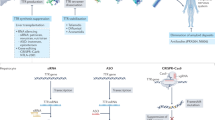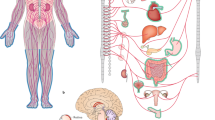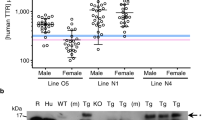Abstract
Familial amyloidotic polyneuropathy (FAP) is the common form of hereditary generalized amyloidosis and is characterized by the accumulation of amyloid fibrils in the peripheral nerves and other organs. Liver transplantation has been utilized as a therapy for FAP, because the variant transthyretin (TTR) is predominantly synthesized by the liver, but this therapy is associated with several problems. Thus, we need to develop a new treatment that prevents the production of the variant TTR in the liver. In this study, we used HepG2 cells to show in vitro conversion of the TTR gene by single-stranded oligonucleotides (SSOs), embedded in atelocollagen, designed to promote endogenous repair of genomic DNA. For the in vivo portion of the study, we used liver from transgenic mice whose intrinsic wild-type TTR gene was replaced by the murine TTR Val30Met gene. The level of gene conversion was determined by real-time RCR combined with mutant-allele-specific amplification. Our results indicated that the level of gene conversion was approximately 11 and 9% of the total TTR gene in HepG2 cells and liver from transgenic mice, respectively. Gene therapy via this method may therefore be a promising alternative to liver transplantation for treatment of FAP.
This is a preview of subscription content, access via your institution
Access options
Subscribe to this journal
Receive 12 print issues and online access
$259.00 per year
only $21.58 per issue
Buy this article
- Purchase on Springer Link
- Instant access to full article PDF
Prices may be subject to local taxes which are calculated during checkout









Similar content being viewed by others
References
Araki S . Type I familial amyloidotic polyneuropathy (Japanese type). Brain Dev 1984; 6: 128–133.
Benson MD . Familial amyloidotic polyneuropathy. Trends Neurosci 1989; 12: 88–92.
Connors LH, Richardson AM, Theberge R, Costello CE . Tabulation of transthyretin (TTR) variants as of 1/1/2000. Amyloid 2000; 7: 54–69.
Holmgren G et al. Clinical improvement and amyloid regression after liver transplantation in hereditary transthyretin amyloidosis. Lancet 1993; 341: 113–116.
Ericzon BG, Holmgren G, Lundgren E, Suhr OB . New structural information and update on liver transplantation in transthyretin-associated amyloidosis. Report from the 4th International Symposium on Familial Amyloidotic Polyneuropathy and Other Transthyretin Related Disorders & the 3rd International Workshop on Liver Transplantation in Familial Amyloid Polyneuropathy, Umea, Sweden, June 1999. Amyloid 2000; 7: 145–147.
Skinner M et al. Liver transplantation as a treatment for familial amyloidotic polyneuropathy. Ann Intern Med 1994; 120: 133–134.
Takei Y et al. Partial-liver transplantation to treat familial amyloid polyneuropathy: follow-up of 11 patients. Ann Intern Med 1999; 131: 592–595.
Ando Y et al. Effect of liver transplantation on autonomic dysfunction in familial amyloidotic polyneuropathy type I. Lancet 1995; 345: 195–196.
Suhr O et al. Impact of gastrointestinal dysfunction on survival after liver transplantation for familial amyloidotic polyneuropathy. Dig Dis Sci 1996; 41: 1909–1914.
Lendoire J et al. Liver transplantation in transthyretin familial amyloid polyneuropathy: first report from Argentina. Amyloid 1996; 6: 297–300.
Yoon K, Cole-Strauss A, Kmiec EB . Targeted gene correction of episomal DNA in mammalian cells mediated by a chimeric RNA–DNA oligonucleotide. Proc Natl Acad Sci USA 1996; 93: 2071–2076.
Cole-Strauss A et al. Correction of the mutation responsible for sickle cell anemia by an RNA–DNA oligonucleotide. Science 1996; 273: 1386–1389.
Kren BT, Cole-Strauss A, Kmiec EB, Steer CJ . Targeted nucleotide exchange in the alkaline phosphatase gene of HuH-7 cells mediated by a chimeric RNA/DNA oligonucleotide. Hepatology 1997; 25: 1462–1468.
Xiang Y et al. Targeted gene conversion in a mammalian CD34+-enriched cell population using a chimeric RNA/DNA oligonucleotide. J Mol Med 1997; 75: 829–835.
Kren BT, Bandyopadhyay P, Steer CJ . In vivo site-directed mutagenesis of the factor IX gene by chimeric RNA/DNA oligonucleotide. Nat Med 1998; 4: 285–290.
Alexeev V, Yoon K . Stable and inheritable changes in genotype and phenotype of albino melanocytes induced by an RNA/DNA oligonucleotide. Nat Biotechnol 1998; 16: 1343–1346.
Kren BT et al. Correction of the UDP-glucuronosyltransferase gene defect in the Gunn rat model of Crigler–Najjar syndrome type I with a chimeric oligonucleotide. Proc Natl Acad Sci USA 1999; 96: 10349–10354.
Gamper HB et al. A plausible mechanism for gene correction by chimeric oligonucleotides. Biochemistry 2000; 39: 5808–5816.
Gamper HB et al. The DNA strand of chimeric RNA/DNA oligonucleotides can direct gene repair/conversion activity in mammalian and plant cell-free extracts. Nucleic Acids Res 2000; 28: 4332–4339.
Liu L, Rice MC, Kmiec EB . In vivo gene repair of point and frameshift mutations directed by chimeric RNA/DNA oligonucleotides and modified single-stranded oligonucleotides. Nucleic Acids Res 2001; 29: 4238–4250.
Maeda S et al. What lessons to learn from the rodent models carrying targeted mutations at the TTR locus?. In: Bernstein L and Ingenbleek Y (eds) First International congress on Transthyretin in Health and Disease. Université Louis Pasteur: Strasbourg, 2002, pp. 32 (Abstr. L. 10 ).
Tsuzuki T et al. Structure of human prealbumin gene. J Biol Chem 1985; 260: 12224–12227.
Wakasugi S, Maeda S, Shimada K . Structure and expression of the mouse prealbumin gene. J Biochem 1986; 100: 49–58.
Takeda S, Ichii S, Nakamura Y . Detection of K-ras mutation in sputum by mutant-allele-specific amplification (MASA). Hum Mutat 1993; 2: 112–117.
Estibeiro P, Godfray J . Antisense as a neuroscience tool and therapeutic agent. Trends Neurosci 2001; 24 (Suppl): S56–S62.
Wang H, Prasad G, Buolamwini JK, Zhang R . Antisense anticancer oligonucleotide therapeutics. Curr Cancer Drug Targets 2001; 1: 177–196.
Ruffner DE, Stormo GD, Uhlenbeck OC . Sequence requirements of the hammerhead RNA self-cleavage reaction. Biochemistry 1990; 29: 10695–10702.
Perez-Ruiz M, Barroso-deljesus A, Berzal-herranz A . Specificity of the hairpin ribozyme. J Biol Chem 1999; 274: 29376–29380.
Tanaka K et al. Suppression of transthyretin expression by ribozymes: a possible therapy for familial amyloidotic polyneuropathy. J Neurol Sci 2001; 183: 79–84.
Ando Y et al. Down regulation of a harmful variant protein by replacement of its normal protein. Biochim Biophys Acta 1997; 1362: 39–46.
Kay MA, Glorioso JC, Naldini L . Viral vectors for gene therapy: the art of turning infectious agents into vehicles of therapeutics. Nat Med 2001; 7: 33–40.
Nishikawa M, Huang L . Nonviral vectors in the new millennium: delivery barriers in gene transfer. Hum Gene Ther 2001; 12: 861–870.
Fujioka K, Takada Y, Sato S, Miyata T . Novel delivery system for proteins using collagen as a carrier material: the minipellet. J Control Rel 1995; 33: 307–315.
Ochiya T et al. New delivery system for plasmid DNA in vivo using atelocollagen as a carrier material: the minipellet. Nat Med 1999; 5: 707–710.
Lee CH, Singla A, Lee Y . Biomedical applications of collagen. Int J Pharmacol 2001; 221: 1–22.
Bohling SD, King TC, Wittwer CT, Elenitoba-Johnson KS . Rapid simultaneous amplification and detection of the MBR/JH chromosomal translocation by fluorescence melting curve analysis. Am J Pathol 1999; 154: 97–103.
Nakao M, Janssen JW, Flohr T, Bartram CR . Rapid and reliable quantification of minimal residual disease in acute lymphoblastic leukemia using rearranged immunoglobulin and T-cell receptor loci by LightCycler technology. Cancer Res 2000; 60: 3281–3289.
Kren BT, Metz R, Kumar R, Steer CJ . Gene repair using chimeric RNA–DNA oligonucleotides. Semin Liver Dis 1999; 19: 93–104.
Richardson PD, Kren BT, Steer CJ . Gene repair in the new age of gene therapy. Hepatology 2002; 35: 512–518.
Tagalakis AD et al. Gene conversion of the apolipoprotein (apo) E2 phenotype to wild-type apoE3 by in situ chimeraplasty. J Biol Chem 2001; 276: 13226–13230.
Yamamura K et al. Tissue-specific and developmental expression of human transthyretin gene in transgenic mice. Dev Genet 1987; 8: 195–205.
Stenzel KH, Miyata T, Rubin AL . Collagen as a biomaterial. Annu Rev Biophys Bioeng 1974; 3: 231–253.
Honma K et al. Atelocollagen-based gene transfer in cells allows high-throughput screening of gene functions. Biochem Biophys Res Commun 2001; 289: 1075–1081.
Misumi S et al. The p2gag peptide, AEAMSQVTNTATIM, processed from HIV-1 Pr55gag was found to be a suicide inhibitor of HIV-1 protease. Biochem Biophys Res Commun 1997; 241: 275–280.
Acknowledgements
The corresponding author's work was supported by grants from the Amyloidosis Research Committee, and the Pathogenesis and Therapy of Hereditary Neuropathy Research Committee, Surveys and Research on Specific Diseases, the Ministry of Health, Labor and Welfare of Japan, Charitable Trust Clinical Pathology Research Foundation of Japan, and Grants-in-Aid for Scientific Research (C) 13670655 and (B) 15390275 from the Ministry of Education, Culture, Sports, Science, and Technology of Japan.
Author information
Authors and Affiliations
Rights and permissions
About this article
Cite this article
Nakamura, M., Ando, Y., Nagahara, S. et al. Targeted conversion of the transthyretin gene in vitro and in vivo. Gene Ther 11, 838–846 (2004). https://doi.org/10.1038/sj.gt.3302228
Received:
Accepted:
Published:
Issue Date:
DOI: https://doi.org/10.1038/sj.gt.3302228
Keywords
This article is cited by
-
Recent advances in transthyretin amyloidosis therapy
Translational Neurodegeneration (2014)
-
Gene therapy approach to FAP: in vivo influence of T119M in TTR deposition in a transgenic V30M mouse model
Gene Therapy (2014)
-
Leptomeningeal familial amyloidosis:
Journal of Neurology (2006)
-
Gene therapy progress and prospects: targeted gene repair
Gene Therapy (2005)



